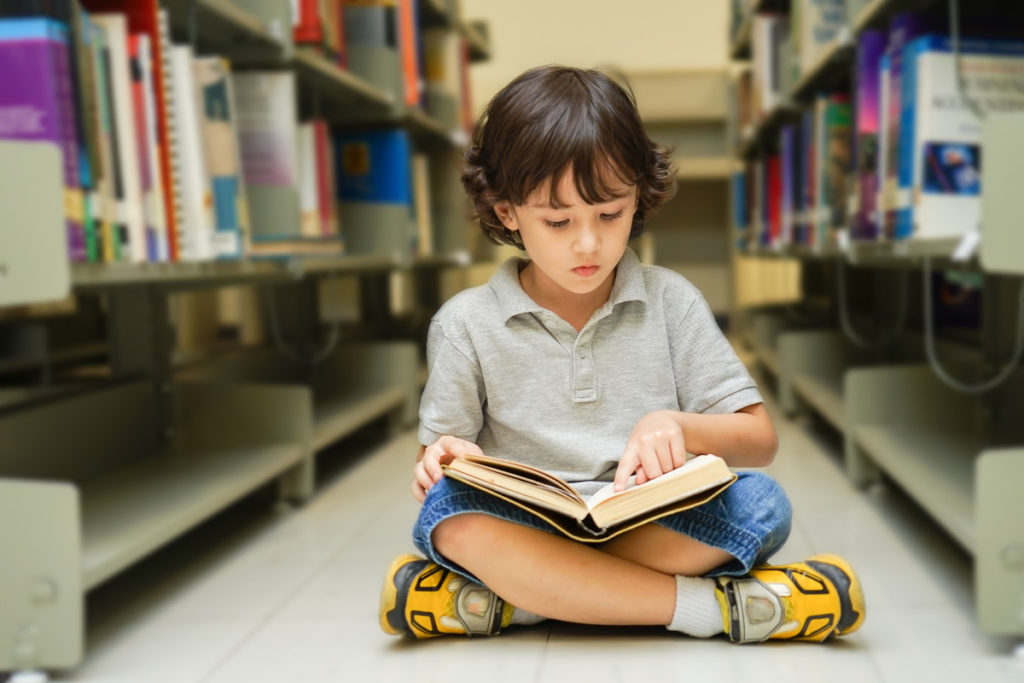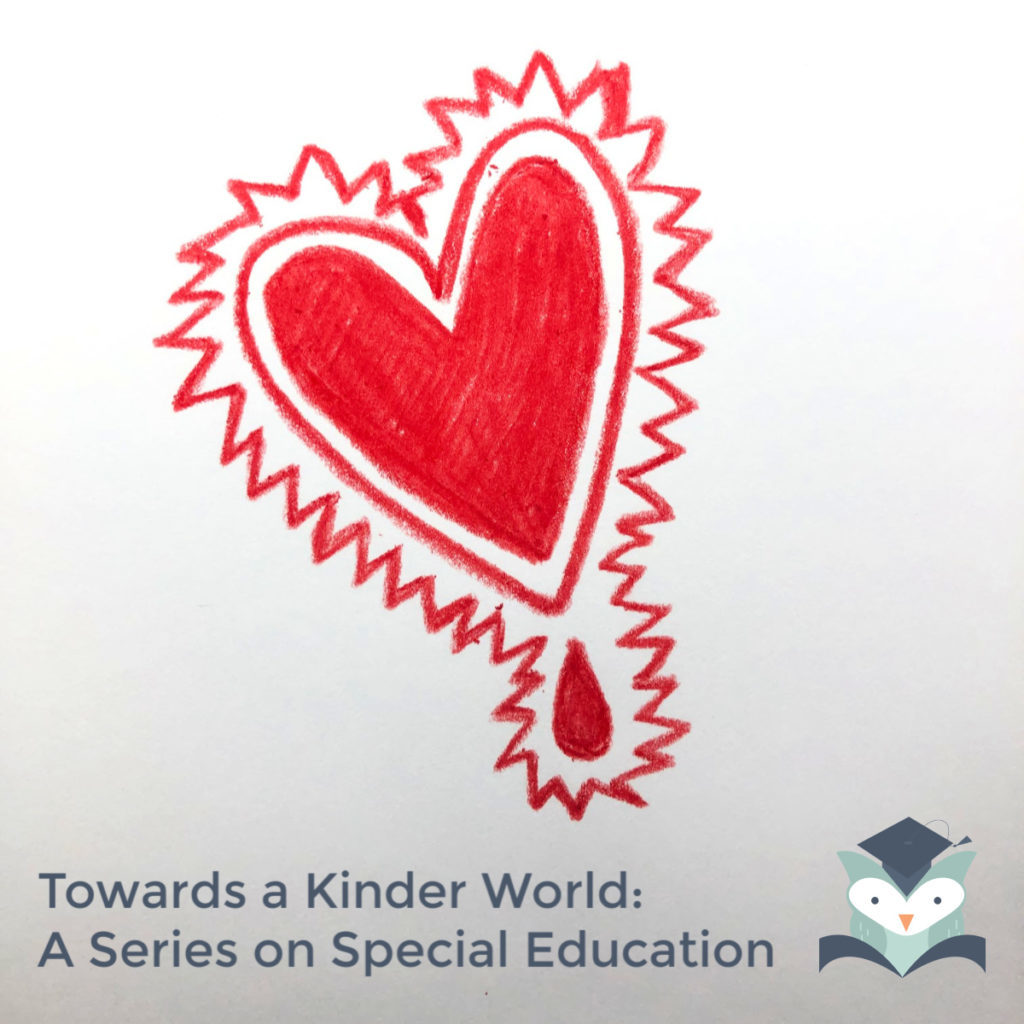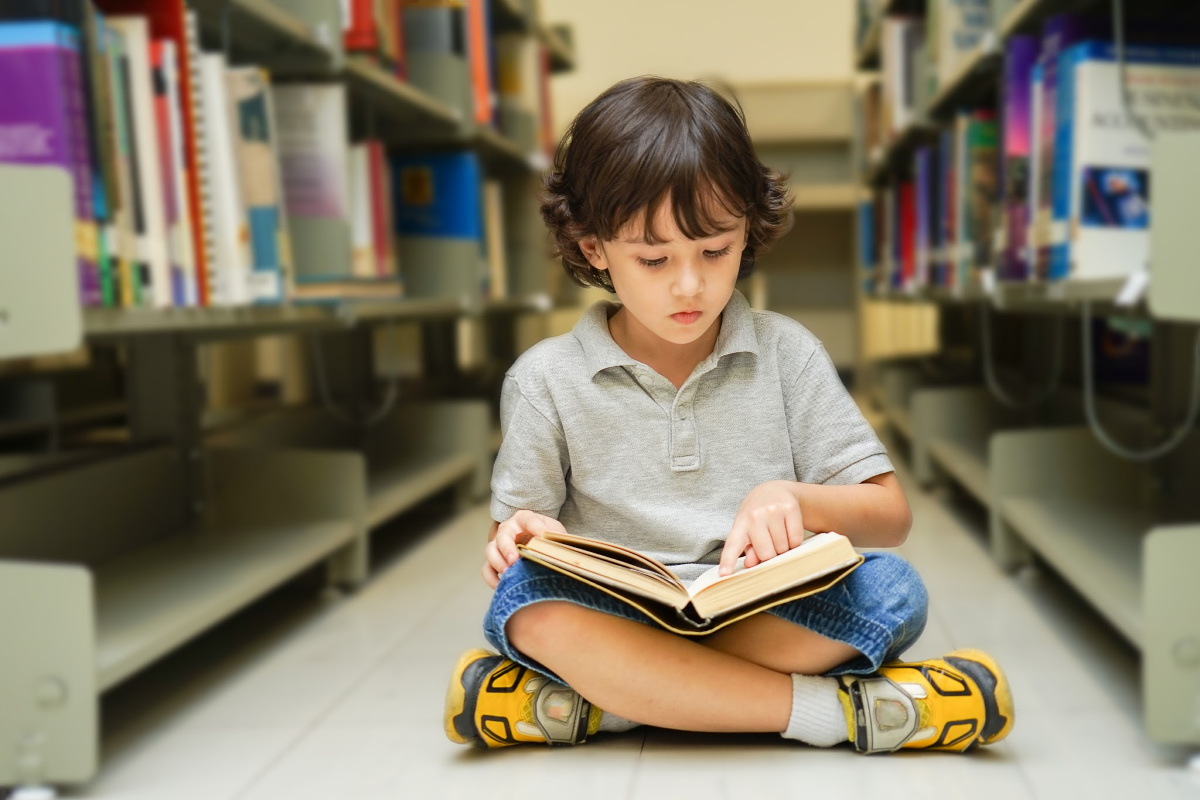
Growing up, Jasmin Dean remembers being a “teacher’s pet.” Her husband had been a teacher’s pet as well. They assumed that their bright, pleasing first born would be the same. The student who was “a delight to teach” and “the kind of student every teacher loves to have in class.” (These are things that teachers write on the report cards of agreeable, eager learners.)
“I expected my first parent-teacher conference to go really well,” she said. Instead, the teacher told her that her son was struggling with pre-literacy skills, the early processes of letter recognition and decoding. It’s nothing to worry about, the teacher told him, lots of boys are slower to pick these things up.
The same happened in kindergarten. He was struggling, the teachers said, but it was probably just a maturity issue.
All along Dean sensed something was wrong. They were not describing the child she knew. He wasn’t a late bloomer. He didn’t struggle with things at home. Still, she said, she deferred to the professional, and let things progress normally.
In first grade, something shifted. After two years of wait-and-see, her son’s teacher was saying that if he didn’t start reading on grade level, he would fail first grade. She started doubling down on at home learning, and for the next two years they powered through to keep him on pace with his peers.
Still, “all of the alarms were going off,” Dean said. It was clearly agonizing for her son, who was now showing signs of psychological distress.
No one mentioned the word “dyslexia” until Dean’s son was in 3rd grade. It was a word that changed their life. While many avoid learning disability diagnosis, for the Dean family, it was a passport to freedom, an insight into the complex but navigable workings of the oldest child’s brain. It was something to celebrate.
Now Dean wants to help others living with dyslexia embrace their unique brains and contributions. She also wants to guide society toward a more accepting and accommodating—yes, even celebratory—relationship with its dyslexic thinkers. That’s why she founded Celebrate Dyslexia.
The nonprofit has three main goals: improve educational offerings and experiences for dyslexic learners, improve the identification process to increase early supports, and to help dyslexic thinkers and their community celebrate their potential.
Education for Dyslexic Students
Right now, Dean explained, children with dyslexia are not surrounded by adults who understand how their brains work. After her son was diagnosed, she knew she would have to play an active role in helping educators know what to expect. It started with belief, she said, “I knew that I needed a teacher who believed that dyslexia is a thing.”
The principal at Bob Beard Elementary in Northside ISD has helped Dean spread awareness among principals and teachers in the district. Because as many as one in five school children experience some form of dyslexia, understanding could affect entire classrooms.
If teachers begin correct interventions promptly, the academic and behavioral demeanor of dyslexic students can be dramatically improved. Dyslexic students can have above average intelligence, according to research, but they have to be able to express what they know, which is a challenge if reading and writing—the vehicles of expression in school—are their only options.
Undiagnosed or poorly supported learning disabilities also lead to disruptive behaviors. Special education students are overrepresented in disciplinary actions nationwide. In Texas, learning disabilities are the most over represented of all the special education classifications. Kids who want to excel and can’t have to figure out what to do with the frustration that builds throughout a school day, Dean explained, “Human survival does not allow us to continuously put ourselves in a situation in which we cannot thrive.”
Sometimes kids just do whatever it takes to get out of class. Even the principal’s office is a better alternative.
If teachers can provide places for these students to excel, and the tools they need to complete tasks in areas where they struggle, they may have star students.
Like her son, Dean said, many are highly motivated. When he heard how much work it would require to read and write on grade level, her son told her, “I’ll do whatever it takes.”
He was a teacher’s pet after all. He just needed the tools to show it.
Getting those tools, however, is a process. Getting an IEP to mandate the accommodations and modification to classroom instruction is a long process, and even then reading specialists have to be dispatched, which requires funding. Ideally, teachers would be trained in dyslexia intervention so that they can deliver some services through classroom interventions, but professional development is expensive as well, where it is even available.
In 2019, through the education finance law known as HB3, the Texas Legislature created additional funding for dyslexia services, but districts are reporting trouble accessing the funds.
There’s work to be done.
Identification of Dyslexia
Currently, Dean explained, dyslexia is coded as a psychiatric disorder. That’s not the correct category, she said, and she’s advocating to have it classified as a medical condition so that insurance companies will cover diagnosis and treatment.
Reclassification could also move identification from the psychologist’s office (where few kids naturally end up) to the doctor’s office, where most kids visit frequently in their earliest years. The signs of dyslexia can show up early, so Dean would like to see more pediatricians screening for it. A pediatrician’s letter would then make it much easier for school districts to put 504 plans in place to ensure students are supported from day one.
Universal screening should be happening in schools as well, advocates say.
There’s a gap between the neuroscience of dyslexia and how it is coded. As we learn more about not only the weaknesses, but the strengths of dyslexia, Dean would like to see the International Statistical Classification of Disease (ICD) code include a more definitive and specific description of what dyslexia is, beyond the symptoms currently described. By making dyslexia synonymous with “difficulty reading” it contributes to the perception that dyslexic students are slow, lazy, or dumb, or that their difference could be resolved by simply trying harder.
A more clear definition could also help pediatricians and educators identify actual dyslexia without the years of guesswork Dean’s family experienced.
Celebration of Dyslexia
Because their family was so relieved to hear the diagnosis, Dean said her son at first thought of his dyslexia as a “superpower.”
That framing was short lived.
When the Deans began to plug into advocacy groups and dyslexia resources, the language was overwhelmingly negative. It was about the struggle ahead. Well-meaning advocates tried to prepare parents for the bureaucratic battles ahead, and the difficulty of providing home-based supports if districts are not proactive.
She could see her son deflating again. Feeling like a burden to his school and family.
Dean stopped allowing her son to have access to the negative messages, and started looking for asset-based resources. She found very few.
It seemed strange to her because the more she read, the more she realized how powerful dyslexia could be . . . in a good way.
The creativity and outside-the-lines thinking required of dyslexic thinkers shaped entrepreneurs Richard Branson and IKEA founder Ingvar Kamprad. It’s likely that many more entrepreneurs, creatives, and innovators throughout history were also dyslexic, but the diagnostic tools to confirm the anecdotal evidence did not exist.
In The Dyslexic Advantage: Unlocking the Hidden Potential of the Dyslexic Brain, Brock Eide and Fernette Eide discuss the many strengths of the dyslexic brain, including creativity and curiosity, two qualities that lead to innovation.
However, a public awareness campaign needs more than a book . . . especially a public awareness campaign about dyslexia.
Dean finally found what she was looking for at the Oklahoma Science Museum. An exhibit called “Beautiful Minds— Dyslexia and the Creative Advantage.” She convinced the museum to create a traveling version of the exhibition, and soon institutions in 38 states had requested it. The DoSeum will host Beautiful Minds from October 10, 2020 to January 9, 2021.
Dean is also helping demystify dyslexia by hosting simulators for various groups. She has presented the simulator to groups through Northside ISD, North East ISD, and City Education Partners. In an upcoming post, I’ll describe my own experience with the simulator.
Probably because so many families are touched by this neurological difference, Dean has found a willing audience for most of her advocacy. Because she’s determined to talk about strengths with hope instead of only deficits with anger, principals and nonprofits are eager to get her in front of groups of educators and parents. She’s been careful to avoid a shrill or angry tone, not because she wants to pander, but because she wants to build a collaborative effective team; she doesn’t want to have to drag services out of every new school her son attends.
So get ready, San Antonio. We’re all invited to Celebrate Dyslexia. 
Charter Moms Chats
Watch Inga Cotton’s interview with Bekah McNeel on Charter Moms Chats.
About the Author
Bekah McNeel is a San Antonio-based education writer who focuses on equity, innovation, and social-emotional learning for publications such as The 74. Over the years, we have republished local education coverage from her Hall Monitor site, and last November she wrote for us a four-part series, “Punished, Not Served,” about unfair discipline for students with disabilities.
Read More
- “What Special Education Parents Want to Keep From COVID-19,” Bekah McNeel, San Antonio Charter Moms, May 27, 2020
- “MTSS: Behavior Support That Comes Before Special Education,” Bekah McNeel, San Antonio Charter Moms, May 13, 2020
- “Decoding the IEP: Parents Learn From a Special Education Advocate,” Bekah McNeel, San Antonio Charter Moms, April 22, 2020
- “Social Distancing Drives Innovation in Special Education Evaluations,” Bekah McNeel, San Antonio Charter Moms, April 8, 2020
